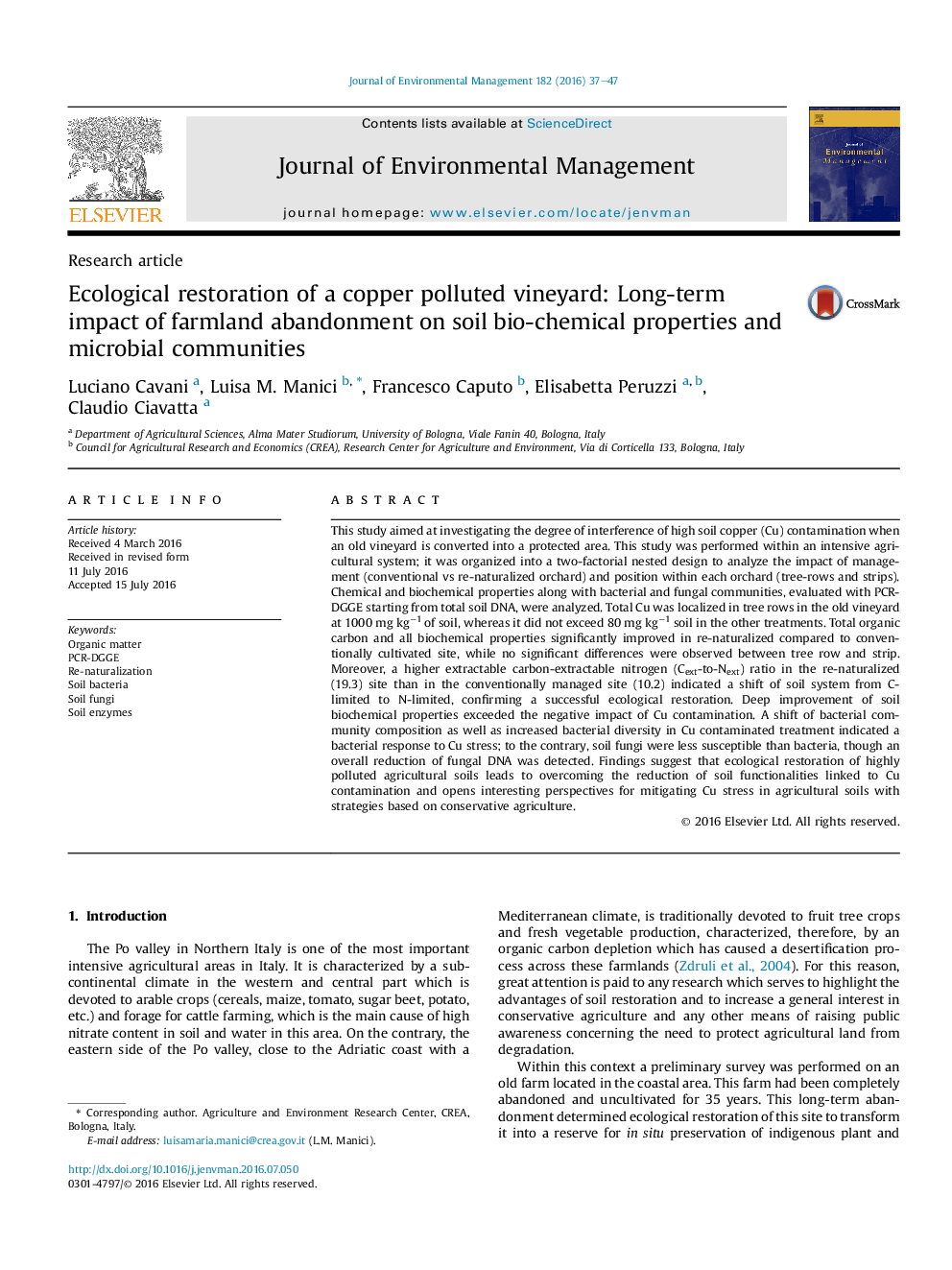| Article ID | Journal | Published Year | Pages | File Type |
|---|---|---|---|---|
| 7478908 | Journal of Environmental Management | 2016 | 11 Pages |
Abstract
This study aimed at investigating the degree of interference of high soil copper (Cu) contamination when an old vineyard is converted into a protected area. This study was performed within an intensive agricultural system; it was organized into a two-factorial nested design to analyze the impact of management (conventional vs re-naturalized orchard) and position within each orchard (tree-rows and strips). Chemical and biochemical properties along with bacterial and fungal communities, evaluated with PCR-DGGE starting from total soil DNA, were analyzed. Total Cu was localized in tree rows in the old vineyard at 1000 mg kgâ1 of soil, whereas it did not exceed 80 mg kgâ1 soil in the other treatments. Total organic carbon and all biochemical properties significantly improved in re-naturalized compared to conventionally cultivated site, while no significant differences were observed between tree row and strip. Moreover, a higher extractable carbon-extractable nitrogen (Cext-to-Next) ratio in the re-naturalized (19.3) site than in the conventionally managed site (10.2) indicated a shift of soil system from C-limited to N-limited, confirming a successful ecological restoration. Deep improvement of soil biochemical properties exceeded the negative impact of Cu contamination. A shift of bacterial community composition as well as increased bacterial diversity in Cu contaminated treatment indicated a bacterial response to Cu stress; to the contrary, soil fungi were less susceptible than bacteria, though an overall reduction of fungal DNA was detected. Findings suggest that ecological restoration of highly polluted agricultural soils leads to overcoming the reduction of soil functionalities linked to Cu contamination and opens interesting perspectives for mitigating Cu stress in agricultural soils with strategies based on conservative agriculture.
Related Topics
Physical Sciences and Engineering
Energy
Renewable Energy, Sustainability and the Environment
Authors
Luciano Cavani, Luisa M. Manici, Francesco Caputo, Elisabetta Peruzzi, Claudio Ciavatta,
